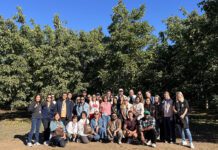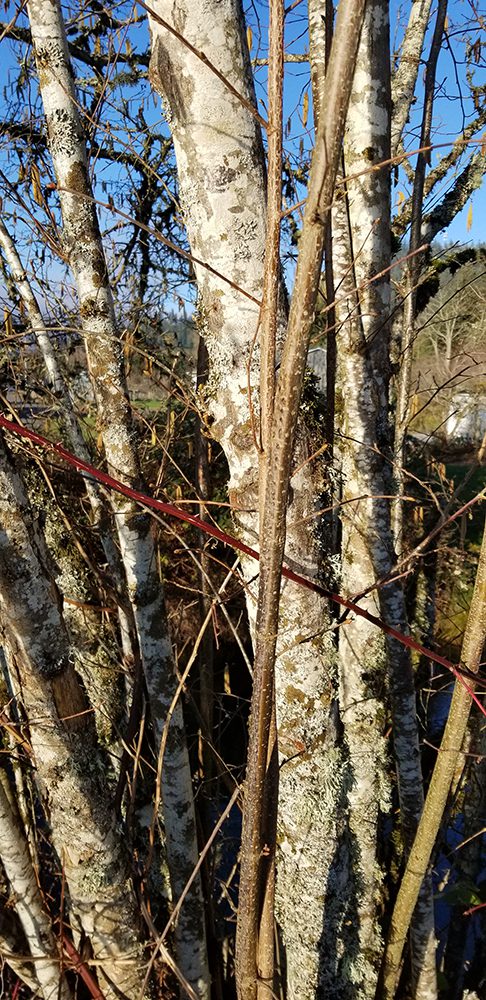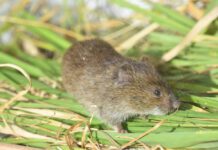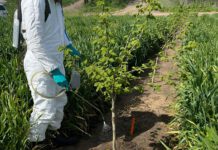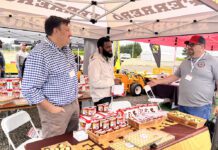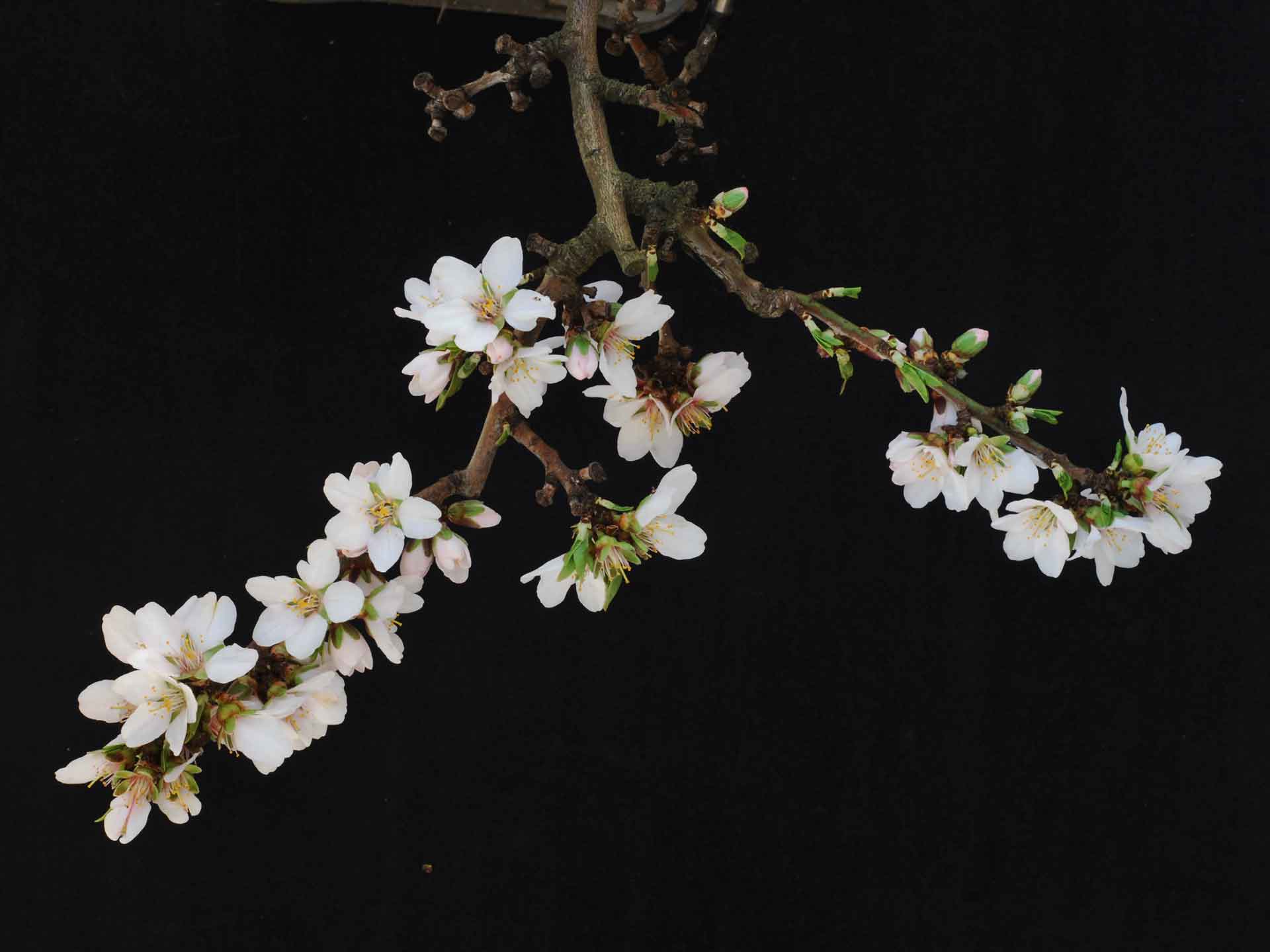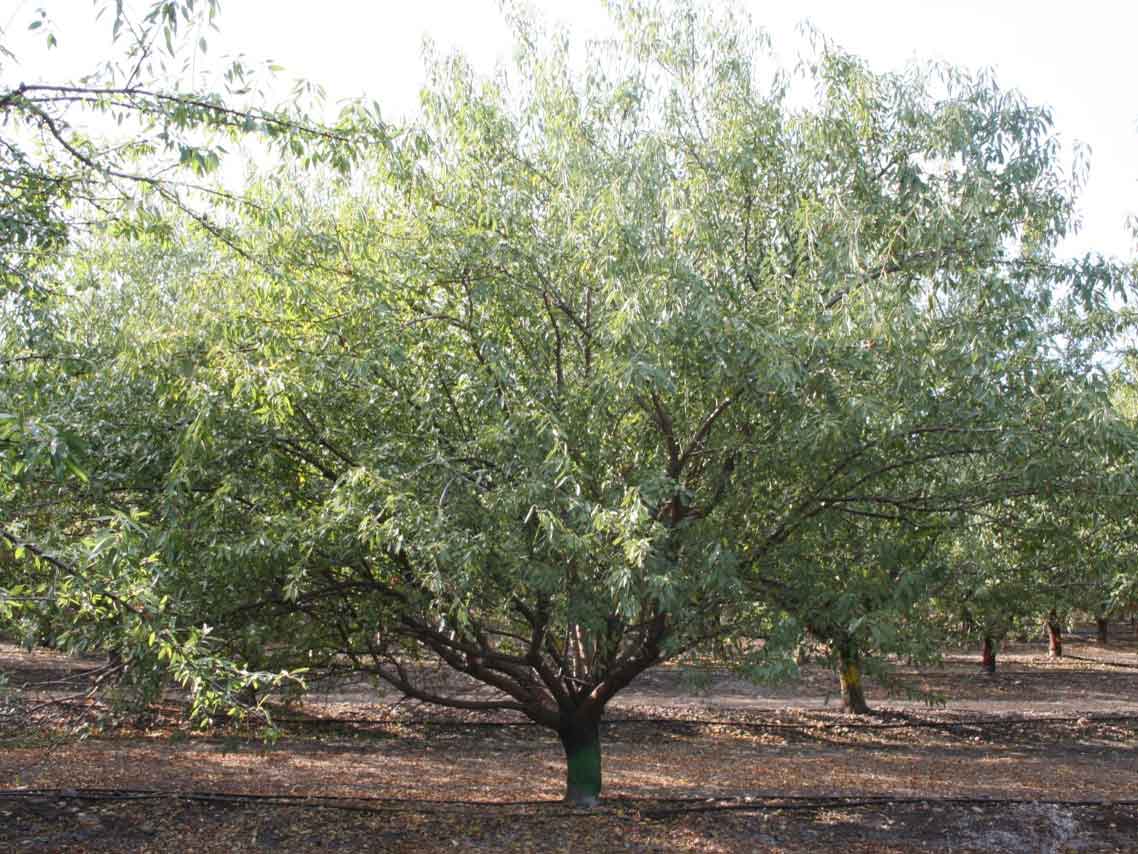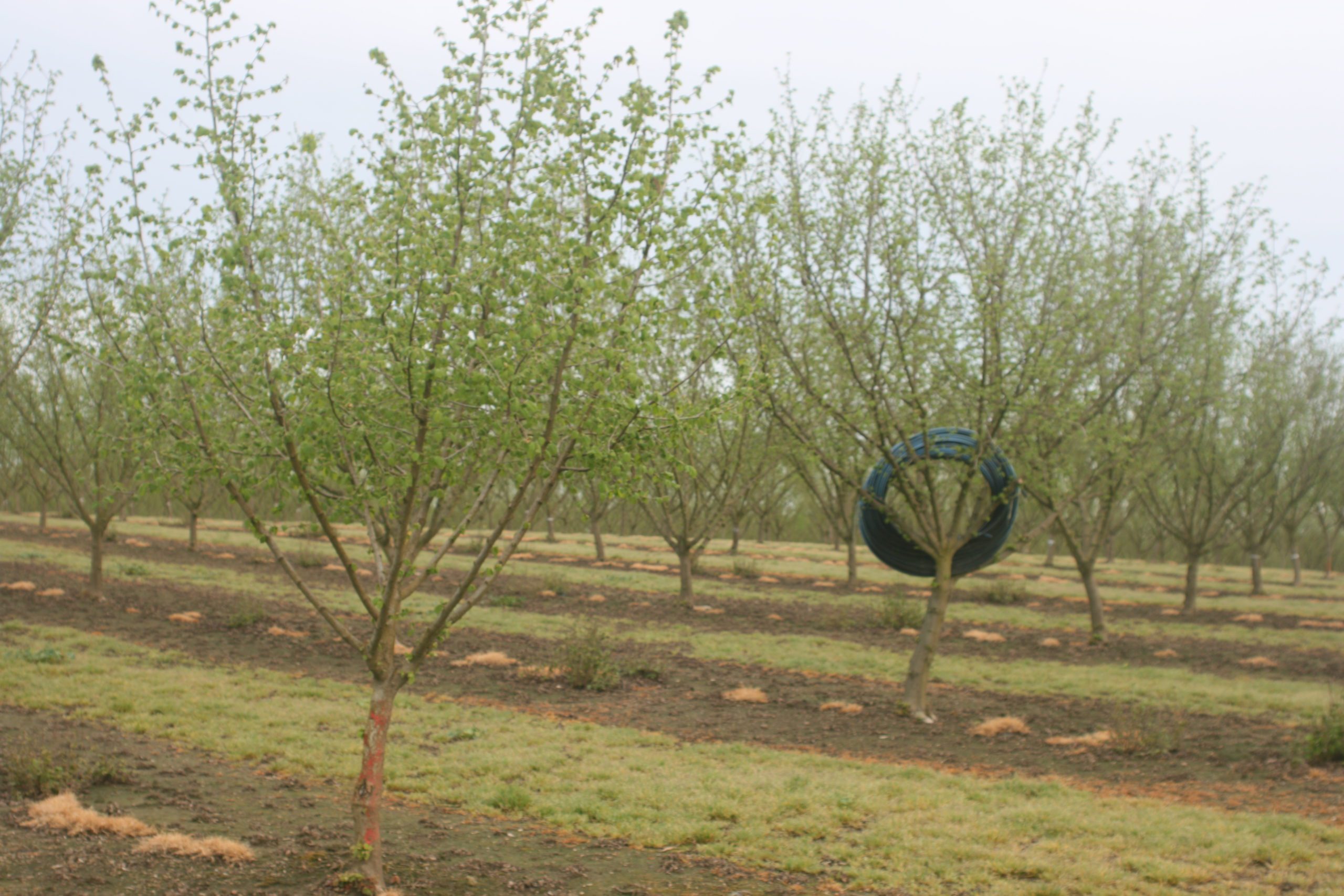Researchers have now determined there are at least three strains of the Eastern Filbert Blight (EFB) fungus now threatening hazelnut trees in Pacific Northwest orchards, including at least two mutations of the region’s original EFB fungus.
“Based on genetic testing, the Silverton strain is actually different than the Woodburn strain, and it’s different from the original strain,” said Oregon State University (OSU) plant pathologist Jay W. Pscheidt in referring to the new strains by location of where they were found. “We have multiple strains of this fungus occurring.”
Speaking at the Nut Growers Society Winter Meeting in Grand Ronde, Ore., on January 10, Pscheidt said both new strains can overcome the EFB resistance formerly provided by the Gasaway gene, a gene that was used in the vast majority of hazelnut cultivars now planted in Oregon, Washington and British Columbia.
“The real key here is we have multiple emergence events,” Pscheidt said. “They are likely happening across the entire Pacific Northwest. We’re going to have new strains popping up that can attack these Gasaway-resistant trees that have been planted.”
In addition to the recent discovery of multiple strains, three OSU scientists, Alexandra Weisberg, Jared LeBoldus and Alex Zaccaron, have now concluded that the new strains are not introductions from outside the region, but mutations from the original strain, according to Pscheidt.

History of Infection
Pscheidt noted that researchers actually were encountering EFB infections on EFB-resistant hazelnut trees long before the break-out discovery in the winter of 2021-2022 of widescale EFB infection in a hazelnut orchard planted to the Jefferson variety, a variety once resistant to the fungus.
“Early on in the 2010s, we did come across a Jefferson orchard that had Eastern Filbert Blight,” Pscheidt said. In that case, the orchard was flanked by a heavily infected Ennis orchard and a heavily infected Barcelona orchard, two varieties susceptible to the disease.
“So it was surrounded by a lot of inoculum,” Pscheidt said.
Researchers proceeded to walk the orchard looking for more evidence of the disease but found only a handful of trees with symptoms. And, Pscheidt said, the EFB cankers were small and relatively harmless as the fungus was unable to reproduce on the trees. “It was basically a dead-end for the fungus.”
Researchers continued monitoring the orchard for the next five years, but again found little to worry about. “A lot of these cankers actually healed over. If you didn’t know it, you wouldn’t know Eastern Filbert Blight cankers were there at all. Others stayed the same. A few got a bit larger, but really, we weren’t too worried about this Jefferson orchard.
“Later,” he added, “we were able to show that it’s basically a dose-response aspect. More inoculum means a greater chance of infection.”
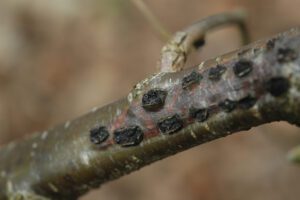
Beginning in the winter of 2021-22, researchers again were called out to orchards planted to seemingly EFB resistant trees that had EFB symptoms. In this case, however, the cankers were larger and more formidable, Pscheidt said.
“These orchards in the Woodburn area that were planted to Jefferson, McDonald and PollyO had cankers that looked a lot different than what we were seeing in the 2010s,” Pscheidt said. “These cankers were longer, they were larger, they had lots of black stroma, and the fungus was able to reproduce on these Gasaway-resistant trees. That was scary all by itself.”
Researchers have subsequently identified EFB infection in orchards planted to formerly EFB resistant trees in the St. Paul area, Gaston, Amity, Silverton and up into Washington. “And I tell you, the pictures that are coming out of British Columbia look exactly the same,” Pscheidt said. “So, it is probably up there as well.
“So, even if you are not near Woodburn, you’re going to need to worry about this disease,” Pscheidt said.
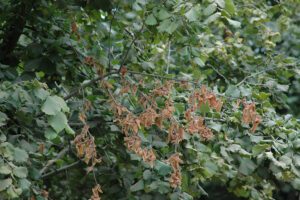
Multiple Cultivars
Pscheidt added that multiple cultivars are now susceptible to the new genetic strains, including Jefferson, Yamhill, PollyO, McDonald, Wepster, Theta and Dorris. Researchers also are finding that the new fungus, which they are referring to as Race 1, is also infecting Sacajawea, the cultivar with quantitative resistance. “We are seeing a lot of disease on those trees, as well,” Pscheidt said. (Researchers are referring to the original EFB fungus as Race 0.)
The bottom line, Pscheidt said, is hazelnut growers throughout the PNW need to be managing their orchards with EFB in mind. “This includes scouting, pruning and applying fungicides,” Pscheidt said.
“You can’t tell me you don’t have this if you’re not out there looking for it,” he added. “As you start getting higher in the tree and start looking a little closer, you’re going to find a lot of it. There is nothing easy about (scouting) for this. It does take some dedication to get out and be looking for it.”
OSU recommends scouting twice in the dormant season, and Pscheidt suggested growers watch for EFB in the summertime, as well. “If you see a branch with dead leaves attached to it, it has died because of something. It may just be a broken branch, but it may have an Eastern Filbert Blight canker on there as well. So, get off the tractor, take a look at it, and see what is going on. Do not ignore these trees.”
Pscheidt asked that growers send infected branches from Gasaway-resistant trees to OSU researchers. “We want to collect as much as we can so we can learn as much as we can about this disease.” Growers need send only infected tissue, or parts with black stroma on it, he said, and to include information on the cultivar, how old the orchard is, and its location.
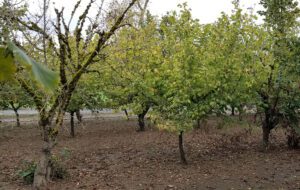
“We’ll do the testing and try to figure out what kind of strains we have emerging out there,” he said.
In the meantime, he said growers should be thinking about applying fungicides to orchards to slow the spread of the disease. “We do not know if the new strains or new races are resistant to the fungicides,” he said. “That is a possibility. But at this point, I have no indication that any of the new fungi are resistant to any of the fungicides (registered for use in hazelnuts).”
If concerned about resistance, he recommended growers use fungicides with multiple site modes of action. “We rarely if ever see resistance to these types of materials.”
He advised growers to start applying materials at bud break.
“I don’t care how you put it on,” he said. “By ground is best, but a fixed-wing airplane or helicopter is fine. I supposed once the data comes in on drones, they will be just fine as well.”
In cases where growers have limited resources, Pscheidt suggested they focus on treating the healthier parts of orchards, rather than heavily diseased parts. The strategy may help a grower improve their return on investment.
He added that growers keep in mind that the fungicides available for use in hazelnut trees will not remove cankers, but simply prevent Eastern Filbert Blight from beginning in the first place. “So, focus on those healthier parts of your orchard if you have limited resources,” Pscheidt said.






